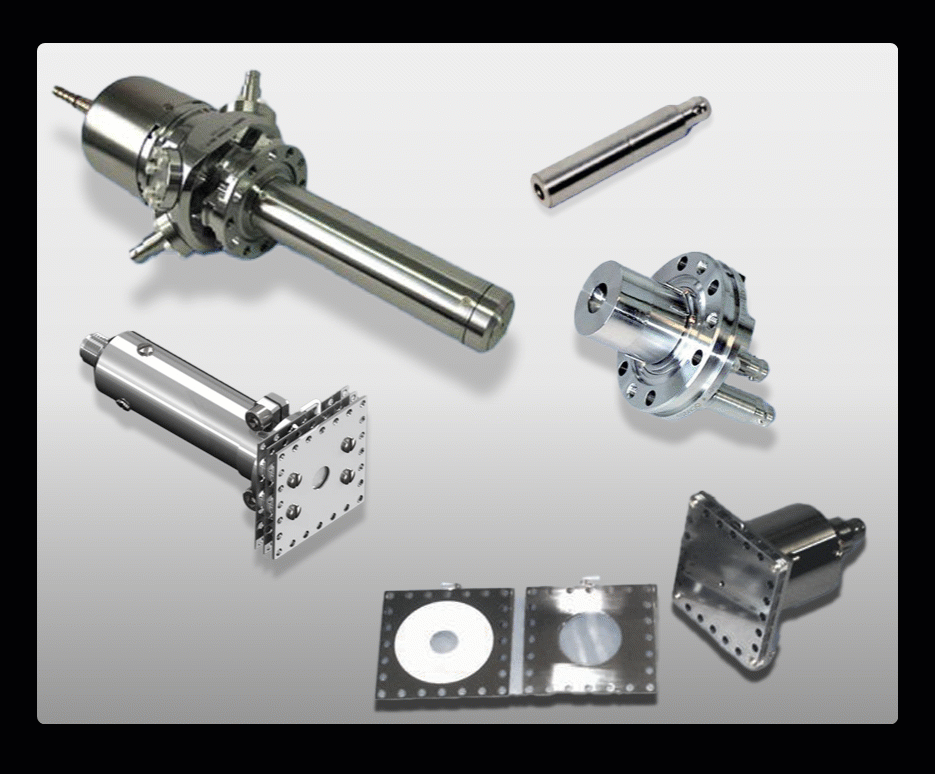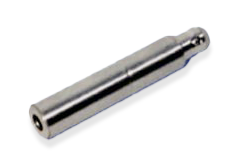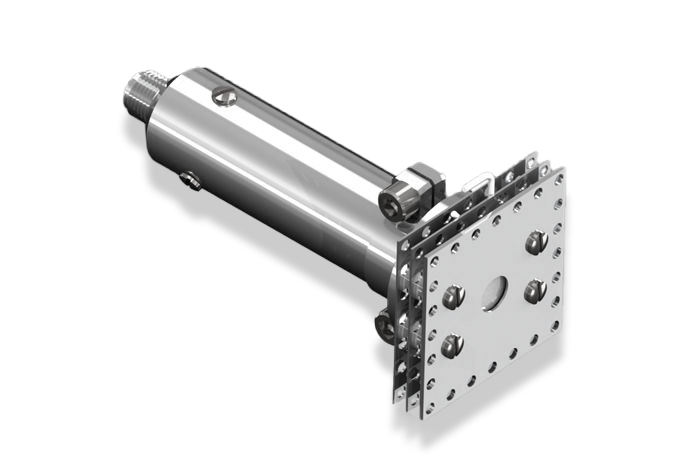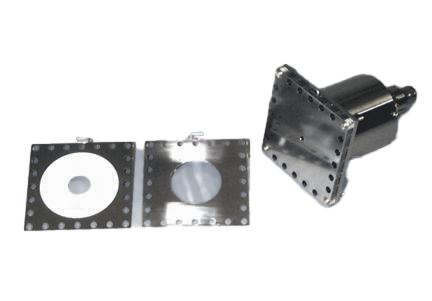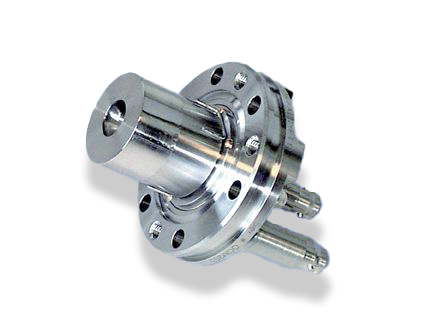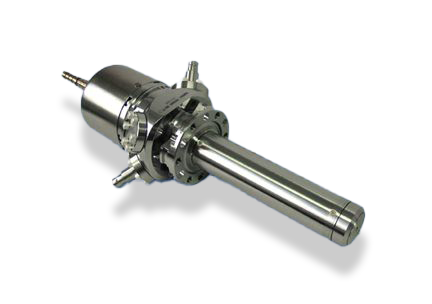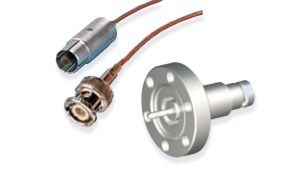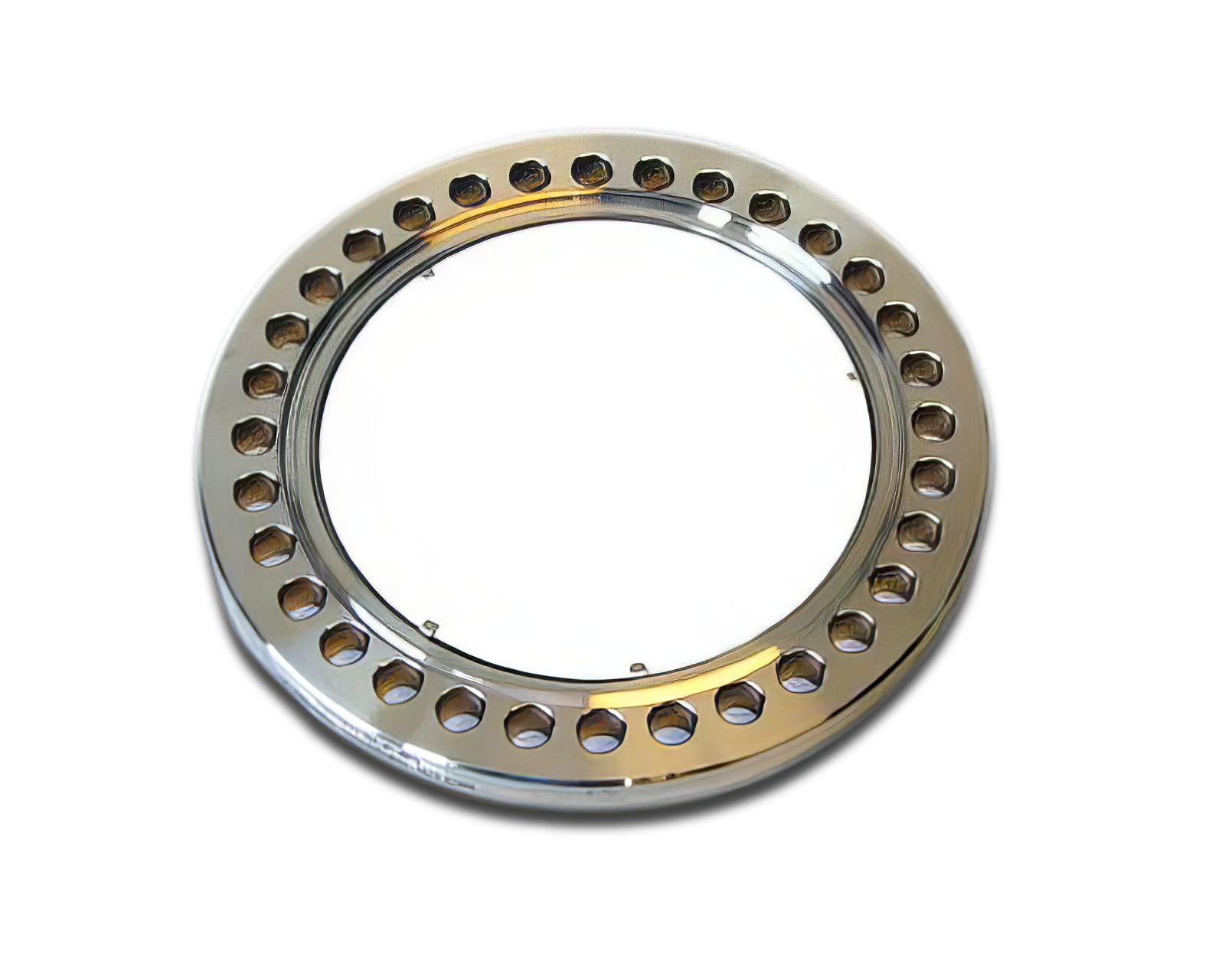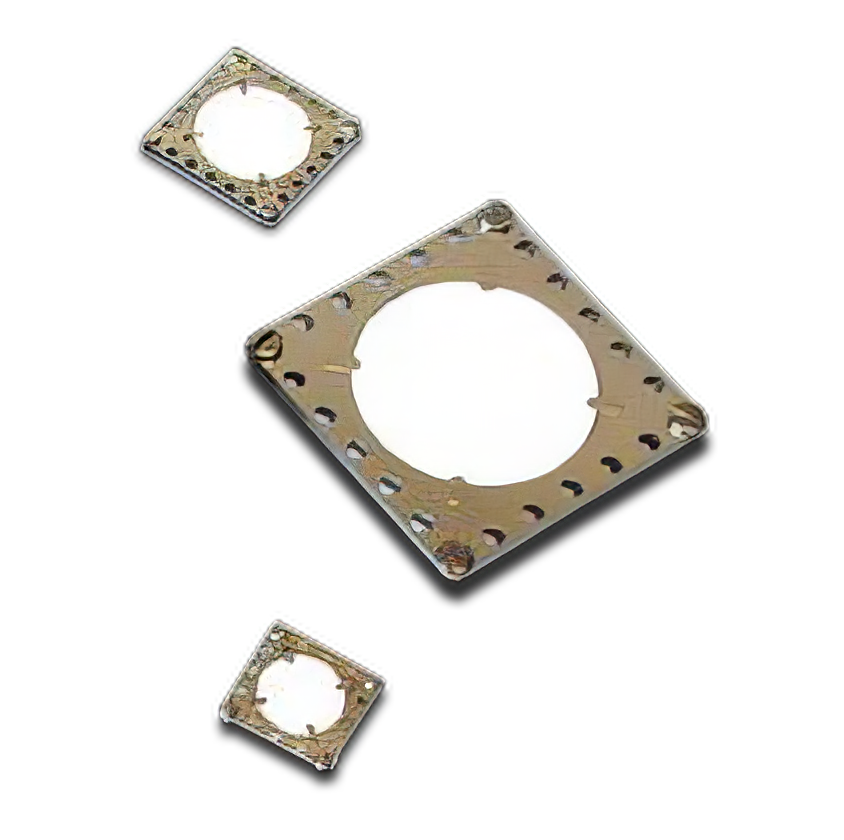Kimball Physics designs and manufactures two types of particle detectors: Faraday Cups and Phosphor Screens.
The basic Faraday Cups are stand alone units with no moving parts and are intended to be mounted in the vacuum system. A number of different types of mechanically or pneumatically actuated Faraday cups are available; most of these mount directly on the housing of electron guns, for direct sampling of the beam.
Phosphor Screens are made of high luminosity P-22 phosphor (ZnS:Ag). The screens are sensitive to electrons starting at approximately 500 eV with a threshold of 1 x 10-7 A/cm2. There are two basic types of phosphor screens: Rugged and UHV. The rugged screens are more resistant to mechanical damage. Their phosphor composition includes a binder that increases durability, however they can experience outgassing at vacuum pressures nearing 10-8 torr. The UHV screens are fabricated with the same phosphor, but without using a binder, and although more delicate, these screens can be used to extremely low vacuums of more than 10-8 torr. Several configuration options are available. The phosphor composition can be coated on either Stainless Steel 304 or conductive glass. The various diameter screens can either mounted on a thin CF flange (RHEED screen) or can be mounted on stainless steel eV Parts of various sizes (Rugged and UHV Screens).
Faraday Cup Options
- Phosphor screen around entrance aperture
- User-changeable apertures
- Energy analyzing grids
- Biased cups (collector cup floated away from ground)
- Water cooling
- Array of cups
Phosphor Screen Options:
- UHV screens (more delicate but optimal for high vacuum conditions)
- Rugged screens (more durable with rough handling)
- RHEED screens (either Rugged or UHV screens mounted on a Thin CF Flange)
To LEARN MORE about Kimball Physics Detectors, please refer to our Detectors- Faraday Cup Overview and Detectors- Phosphor Screen Overview documents (PDFs). Further information is also available in our online Learning Center about Faraday Cup and Phosphor Screen Detectors.
